Posted: February 25th, 2013 | 1 Comment »
Recovering Lost Jewish Lives in China: Yiddish Tears on the Bubbling Well Road
Paul French (Midnight in Peking, The Badlands: Decadent Playground of Old Peking)
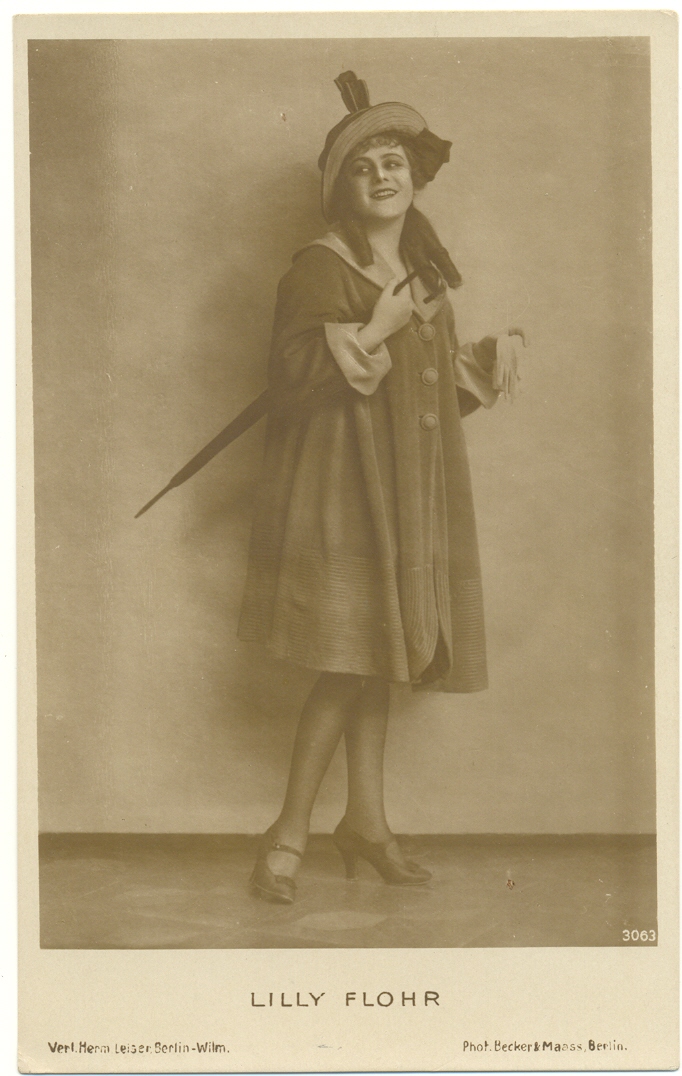
We are pleased to host a talk by author Paul French, who participated in the recent Hong Kong International Literary Festival where he presented his novel “Midnight in Old Peking”. While researching for this book, French came across some interesting stories, quite unrelated to his subject, which he felt deserved to be told.Â
Hardoon, Sassoon, Kadoorie, Ezra… all familiar names whose histories are well documented, but what of those less dramatic Jewish lives, what of those Jews in China who remained largely anonymous or lived on the fringes, in the margins or among the underbelly?
This talk will focus on those Jews in China, lost but perhaps glimpsed in new research, including where they danced all night in the 1940s Shanghai Ghetto; how Eliza Shapera was trafficked from a Bessarabian shtetl to a Shanghai bordello — and then murdered; how Mr. Kahn ended up in the Russian-Jewish slum of Yang-I-Hutung in Peking; how Joe Farren ran away from Vienna’s Jewish ghetto, nearly became Shanghai’s biggest gangster and married Shanghai’s “Josephine Baker”; and why grown men cried when Lily Flohr (above) sang in Yiddish on the Bubbling Well Road.
Join us to hear Paul’s account of this fascinating part of our collective history.
Date:
Thursday evening, 28 February 2013
Time:
6:45 PM for a prompt 7:00 start
Location:
Jewish Community Centre, One Robinson Place, 70 Robinson Road, Mid-Levels
Please note that visitors to the JCC are required to register at the Reception desk upon arrival.
We expect the lecture to last about an hour. Sorry, no kids under 10.
A HK$50 entrance fee will be charged and donated to the JHS Library Fund. So that we can get an indication of numbers, please reserve your place with the Receptionist of the Jewish Community Centre before 5 PM on Thursday, 28 February. She can be reached at 2801-5440 or via email at
jhshkg@yahoo.com.
Should you have any last-minute questions about the lecture, please call April on 9078-6155.

Posted: February 24th, 2013 | 2 Comments »
RAS BOOK CLUB
Monday 11th March 2013 at 7pm

Venue: glo London (3/F, VIP Room or Lounge)
1 Wulumuqi, near Dongping Lu (across from American Consulate)
        上海高ä¹è‹±é¤é¥®æœ‰é™å…¬å¸
        上海市乌é²æœ¨é½å—路一å·ç”²
The RAS Book Club will meet to discuss:
LAO SHE IN LONDON
by Anne Witchard
Published by HK University Press
August 2012, 
188 pages
Copies of the book will be available at RAS events prior to this meeting. You may also obtain a copy of the book by contacting the RAS Book Club (see below).
Entrance: RMB 70.00 (RAS Members) and RMB 100.00 (non-members) including a drink (tea, coffee, soft drink, or glass of wine). Those unable to make the donation but wishing to attend may contact us for exemption, prior to this RAS Book Club event. Member applications and membership renewals will be available at this event.
N.B. RESERVATIONS ESSENTIAL AS SPACE IS LIMITED AT THIS EVENT.
‘London is blacker than lacquer’
Lao She remains revered as one of China’s great modern writers. His life and work have been the subject of volumes of critique, analysis and study. However, the four years the young aspiring writer spent in London between 1924 and 1929 have largely been overlooked. Dr Anne Witchard, a specialist in the modernist milieu of London between the wars, reveals Lao She’s encounter with British high modernism and literature from Dickens to Conrad to Joyce. Lao She arrived from his native Peking to the whirl of London’s West End scene—Bloomsburyites, Vorticists, avant-gardists of every stripe, Ezra Pound and the cabaret at the Cave of The Golden Calf. Immersed in the West End 1920s world of risqué flappers, the tabloid sensation of England’s ‘most infamous Chinaman Brilliant Chang’ and Anna May Wong’s scandalous film Piccadilly, simultaneously Lao She spent time in the notorious and much sensationalised East End Chinatown of Limehouse. Out of his experiences came his great novel of London Chinese life and tribulations—Mr Ma and Son: Two Chinese in London (Er Ma, 1929). However, as Witchard reveals, Lao She’s London years affected his writing and ultimately the course of Chinese modernism in far more profound ways.
THE AUTHOR (who will be in attendance)
Anne Witchard is a lecturer in the Department of English, Linguistics and Cultural Studies, University of Westminster. She is the author of Thomas Burke’s Dark Chinoiserie: Limehouse Nights and the Queer Spell of Chinatown (Ashgate Publishing, 2009) and co-editor with Lawrence Phillips of London Gothic: Place, Space and the Gothic Imagination (Continuum, 2010).
Posted: February 24th, 2013 | 2 Comments »
A lovely old copy of JOP Bland’s Recent Events and Present Policies in China, published by Lippincott of Philadelphia in 1912. The original included a folding map too…
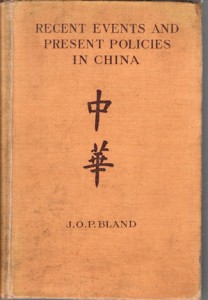
Posted: February 23rd, 2013 | 3 Comments »
A short and sweet, and rather dated, poem today – unattributed I’m afraid but first published in Punch, or the London Charivari, Vol. 146, on April 1, 1914.
Old China
Little Wun-lee’s father, Nang-Poo,
Let her do just what she wanted to do;
Made her processions with peacocky banners
In the most regal and lavish of manners.
Little Wun-lee’s father, Nang-Poo,
Was a magician who lived at Foo-choo.
Now if you possess a magician of cunning
Nothing you want should be out of the running.
Little Wun-lee had all sorts of things—
Fly-away carpets and vanishing-rings,
Djinn as her footmen, and gem-spraying fountains,
And lovely snow-leopards from ghost-haunted mountains.
Little Wun-lee, combing her hair,
Saw a blue butterfly float through the air—
Saw a blue butterfly flicker and settle
On an azalea’s rosy pink petal.
Little Wun-lee said: “By the Mings,
That for your fly-away carpets and rings!
Peacocks and palanquins? Powers and dominions?
I’ll have a pair of blue butterfly’s pinions!”
“Little Wun-lee,” answered Nang Poo,
“That’s the one trick no magician can do;
Never did wizard of land, air or water
Magic blue wings on a little white daughter.”
Little Wun-lee, dainty and dear,
Cried for a day and a week and a year—
Cried till she died of a Thwarted Ambition,
And nobody cared but Nang-Poo, the magician.
Little Wun-lee, little Wun-lee,
He buried her ‘neath the azalea tree;
And the burnished blue butterflies flicker and hover,
And the rosy pink petals fall lightly above her.
Posted: February 22nd, 2013 | No Comments »
My thanks to the website of the Asian American Writers’ Workshop for revealing the work of Shoson Nagahara to me – a writer of whom I had previously been blissfully ignorant. Nagahara was Japanese, born in 1901 and came to America in 1918. He appears to have lived a hand to mouth existence on the streets of LA, and he wrote about it. You can read a fragment of the novel he produced Lament in the Night (published 1925) here. It is quite remarkable, as indeed is the entire book. Nagahara’s LA is one of unemployment, cold lodging houses, bummed meals and scraped together pennies. It is by turns both noirish in a way that prefigures the trend of much Californian writing at the time, though is an early example, and a particularly rare one by a non-American. It is also reminiscent of Orwell’s Down and Out in Paris and London and The Road to Wigan Pier, though those masterpieces would not appear until 1935 and 1937 respectively. Lament in the Night is, in short, a remarkable piece of work….please do check out the Asian American Writers’ Workshop site for the excerpt and a brief biography of Nagahara…it’s not every day you discover a great writer you were completely unaware of previously, but those days are good days!!
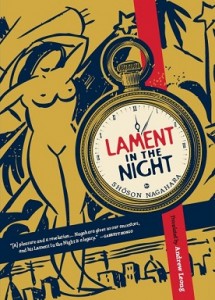
Posted: February 21st, 2013 | No Comments »
Derek Tonkin, the Chairman of non-profit making Network Myanmar and on the Advisory Board of Bagan Capital Limited, sends out a regular email note on events Burmese. His most recent note has an indepth look at the fascinating and long running mystery of whether there are loads of Spitfires, still in their crates in Burma. I have no idea but would so love it to be true and for them to be dug up, assembled and to take off….it’s also of course an excuse to post a picture of the coolest bit of kit ever…
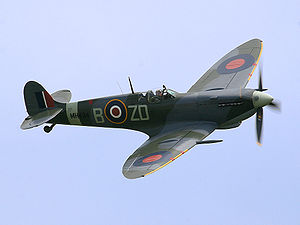
The article below has appeared in ‘The Myanmar Times’ today:
http://www.mmtimes.com/index.php/national-news/3953-myanmar-s-phantom-spitfires-how-a-legend-was-born.html
It is now circulated with hyperlinks, in case readers have a wider interest
Myanmar’s Phantom Spitfires: How a Legend was Born
Derek Tonkin
In recent weeks we have been regaled with stories about the imminent unearthing In Myanmar of literally squadrons of brand-new World War II Spitfires – that iconic aircraft of the Battle of Britain in 1940 – supposedly buried 40 feet deep in their original shipping crates strengthened with Burmese teak. As many as 140 could be found, we were told, but the first phase would be restricted to excavating 36 Spitfires at Yangon International Airport (Mingalardon), 18 at Myitkyina in Kachin State and 6 at Meiktila in Mandalay Region. Contracts were signed, blessed by the British Embassy in Yangon, and we awaited breathlessly the results of the first dig in mid-January. So far, though, there has been not a trace of these aircraft and as Men with Dark Glasses have told the excavation team to stop using JCB diggers after only two days because they were too close to the main runway, who can say what might have been found, or might still be found if digging by hand is permitted during the silent hours?
When I first heard of this story, back in 1998, the rumour was that in August 1945 a handful of newly arrived Spitfires had been placed in a shallow earthen silo as there was no vacant space around the airport buildings at Mingalardon and that these few aircraft had quietly sunk into the ground after heavy monsoon rains, so much so that within a matter of months they had disappeared from sight and were soon forgotten. The rumour supposedly came from US engineering construction veterans who had been tasked to do this by the Royal Air Force (RAF). It was a delightful story, scarcely credible, but one or two businessmen and Spitfire enthusiasts thought it worth a closer look and even investing a little time and money. In the end, a Lincolnshire farmer, David Cundall, saw off the opposition and secured the recovery contract.
What started off, though, as no more than an amateurish treasure hunt has since April 2012 been transformed developed into a saga of veritable fantasy. The report that so many aircraft might still exist is based on evidence of a very flimsy nature. In any case, there is simply no good reason to treat Spitfires in this way. It defies all common sense, which has been remarkably absent in all media comment on this affair.
US military construction engineers said to be the source of the reports
The US military engineers were originally identified as US Navy ‘Seabees’, immortalised in the film “The Fighting Seabees” starring John Wayne. But Seabees never came to Burma. They did their fighting and construction at they hopped from island to island in the Pacific. It was then suggested that they must have been a unit from the military construction battalions which built the Ledo Road into India and other roads and airfields in northern Burma, except that such construction units never worked south of Myitkyina. It then thought that they were in fact a unit of engineers in transit at Rangoon on their way to Singapore at the end of World War II who, out of the goodness of their hearts, had offered their expertise to the RAF to help bury these aircraft, although they presumably had no transport or machinery of their own. The US Unit has never been identified. And how did they get the crates up to Meiktila and Myitkyina? Would it not have been easier to assemble the aircraft at Mingalardon and fly them up, if they were needed there for whatever reason, overt or clandestine?
The main evidence was no fewer than eight eyewitnesses, US and British, who could testify to what they had seen, namely crates with Spitfires being buried at Mingalardon. Unfortunately one of the US eyewitnesses is no longer with us, and the other was on a life-support system some years ago and might by now have gone the way of all flesh. As for British eyewitnesses, I have no reason to disbelieve they saw what they saw, while some recounted what others had said they had seen. But no-one actually seems to have seen any Spitfires as such, only crates about to be buried. None of the actual eyewitnesses, though, was with the RAF, and some who had been permanently stationed at RAF Mingalardon between 1945 and 1947 have said that they saw nothing to confirm these accounts by transient eyewitnesses and did not for a moment believe that there was any truth in the story.
Documentary evidence virtually non-existent
The final piece of evidence is what has been described as “a tantalising bundle of notes” and a record discovered by a researcher in the National Archives at Kew in London showing that some 124 Spitfire Mark XIVs had been “delivered Burma” in August 1945 and then Struck Off Charge (“SOC”). As ‘The Times’ of 7 January 2013 put it, quoting David Cundall: “With an archival researcher’s help, he found an astonishing record. ‘On one day in August 1945, 124 Mark XIV Spitfires were struck off charge – no operational history, no mention of joining squadrons, they just disappeared.’ ” The record in the National Archives however has not been identified by file reference and searches by both official and private investigators, including myself, have failed to locate any such document.
Endeavouring to prove that something does not exist is no easy matter, but we are helped by the fact that every single Spitfire ever built has been faithfully recorded in detail in both online and printed record. (“Spitfire: The History” by Eric Morgan and Edward Shacklady runs to over 675 pages, took over 35 years of research prior to publication and tells you everything you are ever likely to wish to know about every one of the 22,799 Spitfires ever built.) So far as Spitfire Mark XIVs are concerned, you have in this and other references details of those supplied to Air Command South-East Asia (ACSEA), the place they were built (mostly Aldermaston, Eastleigh, Keevil and Chattis Hill, but not Castle Bromwich as so many UK newspapers have reported), the date they were completed, the ship on which they were transported to ACSEA, the squadron to which they were allocated and the date on which they were “SOC” or otherwise disposed of.
I have found no discrepancies, no missing batches, no evidence as alleged that Lord Mountbatten, then Supreme Allied Commander South East- Asia, gave instructions to dispose of these aircraft. None was listed as having been sent by sea to Burma 1945-46, and even if ships had been sent on from Bombay or Karachi, the normal destination for ACSEA-bound aircraft, from a cursory study there were only isolated “SOCs” in 1945 and several in 1946 for operational or other reasons on particular dates. By 1947 and 1948 Mark XIVs were beginning to be struck off in increasing numbers in the ACSEA theatre, which now included Japan, though there seem to have been only isolated cases in Myanmar itself as a result of accidents. We can rule out 36 being struck off at any time during the 20-month period 2 May 1945 (when a RAF Mosquito daringly landed at Mingalardon) to 31 December 1946, while 124 SOCs belongs to the realm of fantasy (even if the few at Meiktila were Mark VIIIs, as has been suggested). A Telegraph report based on information supplied by David Cundall notes that it took “months” for the aircraft at Mingalardon to be buried. What happened to them while they were waiting, I wonder, and what hard luck for the passing US military engineers who probably missed their onward flight to Singapore? We may never know.
The only other speculative explanation suggested for this entombment of commercially valuable aircraft has been that the 36 or more Mark XIVs were a special shipment, never test flown in the UK like all the other 957 Mark XIVs built, not given published serial numbers, but shipped prepared for long-term deep burial in fulfilment of some project even more Secret than Force 136 of Special Operations Executive, Detachment 101 of the US Office of Strategic Services and other clandestine operations whose records have already been released to the public. I find this explanation though totally lacking in credibility.
Increase in air activity after the Japanese surrender
The suggestion that up to 140 Mark XIVs might be superfluous to needs in August 1945 is contradicted, in South-East Asia alone, by the continuing sale and supply into the 1950s of Spitfires of various Marks including Mark XIVs – to the Royal Indian Air Force and its successor the Indian Air Force, to the French Air Force for use in Indo-China until 1953, to the Dutch Air Force for use in the Netherlands East Indies, to the Royal Thai Air Force in 1950, and to the RAF itself for use at their main post-war base in Singapore, in Malaya during the Emergency and to reinforce Hong Kong in 1949 as Chinese communist forces took control of the Chinese mainland. The Burmese Air Force, created in January 1947 some twelve months before independence, took over three Spitfires from ACSEA in 1948 and constantly requested more, receiving another refurbished 20 from the RAF in 1951 and 30 converted carrier-borne Seafires from the Israeli Air Force in 1954. It is simply not credible that all this time brand-new, carefully preserved Spitfires would have remained buried at Mingalardon.
The increased tempo of activity is reflected in the following account in Wikipaedia:  “South-East Asia Command had been increased in size from the day after the surrender, taking in south French Indo-China, and much of the Dutch East Indies. The command was now half as big again in area as it had been during the war. The strain imposed by the high operations tempo that occupation duties, when combined with the downsizing of the command due to demobilisation and return of American aircraft provided under lend-lease aircraft was very great…..”
The only other “evidence” worth mentioning is that in 2004 a scan by an advanced electronic sensor Geonics EM3 mapped the presence of significant deposits of conductive materials in designated areas, but without excavation it was impossible to say what these materials might be. At one stage a trial excavation reportedly reached a buried wooden crate, but allegedly for political and contractual reasons the decision was astonishingly taken not to look inside the crate. Since then the scientific experts involved have spoken more of their interest in uncovering evidence of “conflict archaeology” in which the discovery of Spitfires would be an incidental bonus, as it were. Marsden perforated steel matting (known as PSP) was widely used by Seabees in the construction of Pacific island runways and much is to be found in Myanmar as well, not least in domestic use these days as fencing.
The political background to the myth
My own conclusion, reached three months ago, is that the original story, which I scarcely believed in any case, had now reached such mythical proportions that I decided to include the saga, discreetly, as Myth No. 11 on the website of Network Myanmar (which lists eleven other political myths relating to Myanmar) . However, at the time that Prime Minister David Cameron went to Myanmar in April 2012, it is only fair to say that none of this detail was known and has only emerged since. The PM also went at very short notice. On 1 April 2012, 45 by-elections were held in Myanmar and by the following day it was clear that the National League for Democracy had won a stunning victory, capturing 43 of the 45 seats contested, including the election of Daw Aung San Suu Kyi. The elections were judged by the EU to be reasonably free and fair, despite some irregularities during the campaigning period. The EU needed to discuss urgently whether sanctions should be lifted or not, as the annual review of EU policy on Myanmar would take place on 23 April. As the PM was leaving for a trade promotion visit to Japan, Indonesia, Singapore and Malaysia on 9 April, it was decided at very short notice to include a leg into Myanmar on 13 April, to persuade Suu Kyi to agree at least to the suspension of sanctions, which she did.
There was accordingly little or no time for the PM’s Office at â„– 10 and the Foreign and Commonwealth Office to ask the Ministry of Defence to provide a considered assessment by the RAF Air Historical Branch at Northolt of the reliability of reports, at that stage still very sketchy, about buried Spitfires in Myanmar, though I might have expected â„– 10 at least to make a telephone call. I can see that it was politically very attractive to the PM to mention the matter to President Thein Sein on 13 April 2012 as an example of future possible cooperation on an issue of common heritage at a time of reengagement though â„– 10 have since been at pains to make it clear that they were not involved in any commercial negotiations and had no interest in any aircraft which might be recovered. Some might say that the PM allowed his political instincts to cloud his judgement by venturing on what has turned out to be a wild goose chase of mythical proportions. I would give him though the benefit of any doubt. For the companies supporting David Cundall there has been valuable publicity, and for David Cundall himself probably the recouping of his expenses over the years and an advance fee, since he would surely not now be operating on a “success fee” only basis. I would find it hard though to agree though with the British Embassy spokesman whose colleagues were reported in ‘The Times’ as believing that there was “compelling evidence” that the aircraft were there. The evidence, in my assessment, is virtually non-existent. There is however no need to defend the Prime Minister. These days the British public well understand the foibles and motivations of politicians and are more than willing to forgive him this lapse of judgement while there was the remotest likelihood of unearthing even one Spitfire, whatever its condition.
There is one final twist to the tale. The PM invited a property developer, Steven Boultbee Brooks, to join the trade delegation which accompanied him for the Myanmar leg. Mr Brooks had claimed to be the consortium leader: “We would very much like Mr Cundall on board,” the  ‘Independent’ reported. In the event, the Myanmar authorities gave the recovery contract to David Cundall, not to the PM’s guest. I have wondered whether this might not be a sign from Myanmar that it would have been better if the PM had sought to lift EU sanctions entirely, as the Germans, Italians and others in the EU preferred, rather than just suspending them until April 2013, when a decision will need to be taken on whether to continue the suspension by first reinstating and then immediately suspending EU sanctions again, or to consign them finally to history.
While David Cundall and close friends dig quietly in Myitkyina, let us acknowledge that a legend has been born. It may be a myth totally lacking in credibility, but as Prospero said: “We are such stuff as dreams are made on, and our little life is rounded with a sleep.”
Posted: February 20th, 2013 | 2 Comments »
Chi Zhijian was about the most interesting of the Chinese writers who popped up at the London Book Fair last year (where China was featured country and in the usual style muffed it completely with their handlers heavy-handedness). Her novel, The Last Quarter of the Moon, is now out in English and well worth a read….
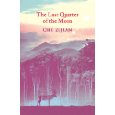
‘A long-time confidante of the rain and snow, I am ninety years old. The rain and snow have weathered me, and I too have weathered them’.
At the end of the twentieth-century an old woman sits among the birch trees and thinks back over her life, her loves, and the joys and tragedies that have befallen her family and her people. She is a member of the Evenki tribe who wander the remote forests of north-eastern China with their herds of reindeer, living in close sympathy with nature at its most beautiful and cruel.
An idyllic childhood playing by the river ends with her father’s death and the growing realisation that her mother’s and uncle’s relationship is not as simple as she thought. Then, in the 1930s, the intimate, secluded world of the tribe is shattered when the Japanese army invades China. The Evenki cannot avoid being pulled into the brutal conflict which marks the first step towards the end of their isolation…
In The Last Quarter of the Moon, prize-winning novelist Chi Zijian, creates a dazzling epic about an extraordinary woman bearing witness not just to the stories of her tribe but also to the transformation of China.
Posted: February 20th, 2013 | No Comments »
Posting in advance a bit but these events tend to get booked out awfully quickly…
The Shanghai Foreign Correspondents Club Presents
‘Restless Empire: China and the World Since 1750’
OA Westad
Saturday Morning, April 13th

OA Westad, a history professor at the London School of Economics, has written one of the most-talked-about books on China in the past year. Restless Empire: China and the World Since 1750 is a timely book on China’s foreign relations. The Washington Post called it a “wonderful book…. Westad upends, but ever so politely, a slew of misconceptions about China that have been concocted by his academic predecessors both in the West and in Asia…. [He shows] that the foreigners’ story in China is not the monochromatic account of malevolent imperialism that has dominated the discourse in U.S. universities but a much richer and more important tale.â€
Save the Date!
Saturday Morning, April 13th
Additional details to be announced soon
RSVP: fcc.sfcc@gmail.com
About the speaker:
Odd Arne Westad is professor of International History at the London School of Economics and Political Science (LSE) and an expert on the Cold War and on contemporary international affairs. He co-directs LSE IDEAS, the LSE’s new centre for international affairs, is an editor of the journal Cold War History and co-editor of the forthcoming three-volume Cambridge History of the Cold War. His book The Global Cold War won the Bancroft Prize for 2006. Born in Norway in 1960, Arne Westad studied at the University of Oslo and did his graduate work at the University of North Carolina, Chapel Hill. He joined LSE in 1998, after serving for six years as Director of Research at the Norwegian Nobel Institute







